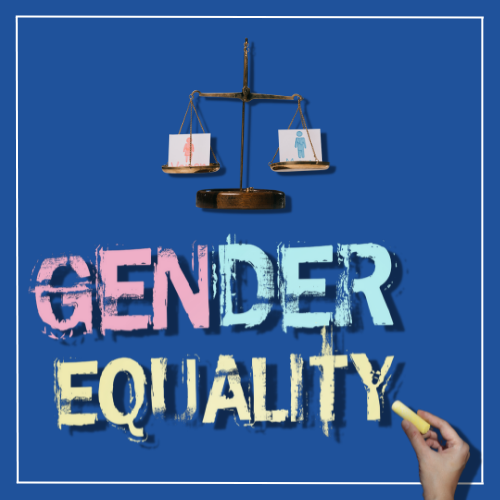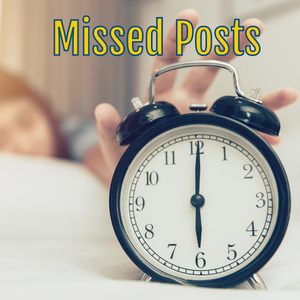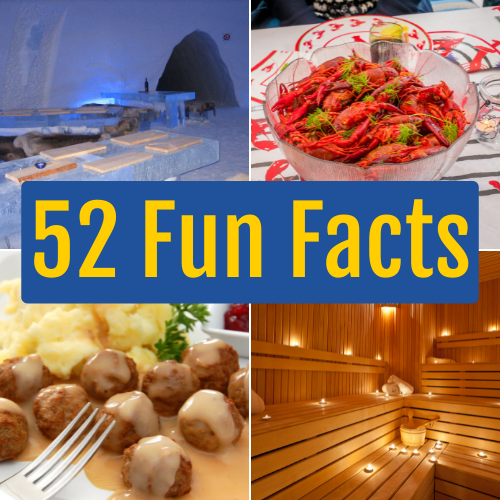Easter in Sweden was until the 1970s observed as a religious holiday, but today it is largely secularized with a blend of Christian, folklore, and old Norse traditions. It is still an official holiday in Sweden with many people off from work on both Friday and Monday of the weekend.
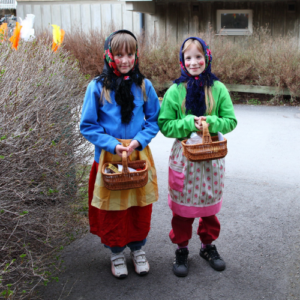
Skärtorsdag (Maundy Thursday)
So let’s talk about Swedish traditions around Easter, and let’s start by talking about Skärtorsdag (Maundy Thursday)
The Swedish word skär has many meanings, it can mean notch or edge, it can also mean a rocky islet or the color pink, but in this case, its meaning is pure or clean and it refers to the story about Jesus washing the disciples’ feet before the last supper.
The traditions of skärtorsdag have very little to do with Christianity. It has more to do with superstition and belief in witches. During the 16th and 17th centuries, the time of witch trials in Europe, this day was believed to be the day when witches traveled to Blåkulla (Blue Hill) to have intercourse with the Devil. The witches made their journey on broomsticks.
Today, this belief has transformed into the tradition of påskkärringar (Easter witches) in Sweden. Kids dress up in old clothes, usually very long skirts and aprons, wear head scarfs, and paint their faces with red cheeks and freckles. They often carry a broom and a black cat, which was the symbol of the devil, and sometimes even a coffee pot (don’t ask me why a coffee pot, I have no idea). They then walk door to door wishing people a happy Easter, often handing out homemade easter cards, and in return, they are given candy, similar to the tradition of Halloween in the US.
Both boys and girls can be dressed as påskkärringar, but for the boys, there is also an alternative called påskgubbar (Easter old men) wearing a black suit, a large fake mustache, and an old top hat.
Långfredag – Good Friday
The translation of långfredag is long Friday, which in English is Good Friday. This is the first public holiday of Easter in Sweden, and most people are off from work. Of course, it commemorates the day that Jesus died on the cross, and when I grew up this was really a long day in every sense. Nothing was open on this day, no stores, no movie theaters, nothing. We only had two TV channels back then, one of them only showed religious programs while the other showed documentaries.
Another reason for this feeling so unnaturally long was probably the anticipation of the upcoming Easter Day, Påskafton, which is the main event during Easter in Sweden.
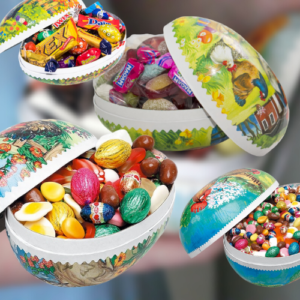
Påskafton – Easter Day
Påskafton is the day when kids, and adults, get showered with food and candy. This day is very much focused on family, food, and candy. Often friends and families get together and the main attraction of the day is the smörgåsbord where a lot of typical dishes are served.
If you listened to my episode about the Swedish Christmas you are probably already familiar with many of the dishes like meatballs, pickled herring, and Janssons frestelse (Janson’s temptation) but the Easter smörgåsboird has its own specialties, almost all of them focused on eggs.
First of all, you have boiled eggs, which you decorate by coloring or painting them. In my family, we usually painted them right there at the table. We then had a competition in the tradition of egg pecking. The competition starts with two of the contestant holding their egg in one hand with the pointed end outwards, you then try to peck the other person’s egg so the shell will crack. The winner, the one with a non-cracked egg, then moves on to the next person and so on. The winner of the game is the last person standing with his or her egg un-cracked.
But boiled eggs are just one of many egg dishes on A Swedish Easter smörgåsbord, we also have egg halves decorated with fish roe or shrimp, gubbröra (old man mix) a mix of anchovies, eggs, and Kalles kaviar (a smoked fish roe paste bought in a tube) egg cake, and sometimes even egg bread. And just as with Christmas the most popular soda is must, that is the same soda with a different name, now called Påskmust (Easter must) instead of julmust (Christmas must)
After the påsklunch and all that eating, it is time for the highlight, at least for the kids, påskägg (Easter eggs). These are egg-shaped containers, made out of cardboard, that are split in the center lengthwise. They come in all sizes from a few inches up to a yard and are nicely decorated with drawings of old farm scenes with chickens and roosters, Easter bunnies, and much more. It is not easy to describe them in an audio podcast but if you visit aswedishfika.com and look at the blogpost called A Swedish Easter you can see photos. These eggs are filled with candy lots of Easter candy, and even though Sweden is one of the countries in the world when it comes to candy consumption, during the week of Easter this skyrocketed, and the Swedes consume about three pounds of candy per person this week alone. In many families, it is also a tradition to hide these eggs for the kids to find.
Two more official holiday days.
Swedish Easter has two more official holiday days, påskdagen (Easter Sunday) and annandagpåsk (Easter Monday). Both are official holidays, and Easter Sunday is also an official flag day in Sweden, but besides that, there are no specific traditions connected to these days, maybe Swedes just need two days to recover after all that food and candy?
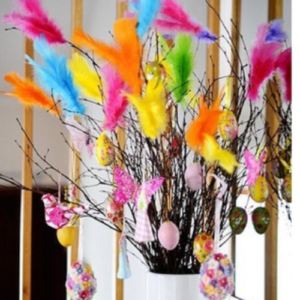
Decorations
Unlike Christmas, Easter is not a very big decoration holiday, but there are a few decorations you will find in almost every Swedish home.
The first one is påskris (Easter twigs).
First, let’s talk about history, in the 17th-century people used to cut birch twigs on Maunday Thursday and prepare these in bunches for the traditional flogging that took place on the morning of Good Friday to commemorate Jesus suffering on the cross on this day.
Today the birch twigs are not used for flogging, instead, they are used for decorations.
You put your twigs in a vase with water and decorate them with colorful feathers and eggs made of plastic or real empty painted eggshells.
Since this is also the end of the long dark winter in Sweden flowers are an important part of the decorations both inside and in the yards. The most popular ones are daffodils and tulips who are placed both in pots and vases.
Another popular decoration is the Easter rooster, the Swedish equivalent of the American Easter bunny.
Final thoughts
Easter in Sweden is nowadays a very secular holiday that provides Swedes with an extra-long weekend Friday – Monday, just as the winter starts to break, filled with family food and candy. It is for many Swedes a point in time where we leave the dark winter behind and start to enjoy longer days and the sun again.
In my next episode, I will talk about Swedish inventions. Some of them are things that you might use on a daily basis without knowing they are Swedish inventions.
Until next time
As we say in Sweden
Hej Då!

